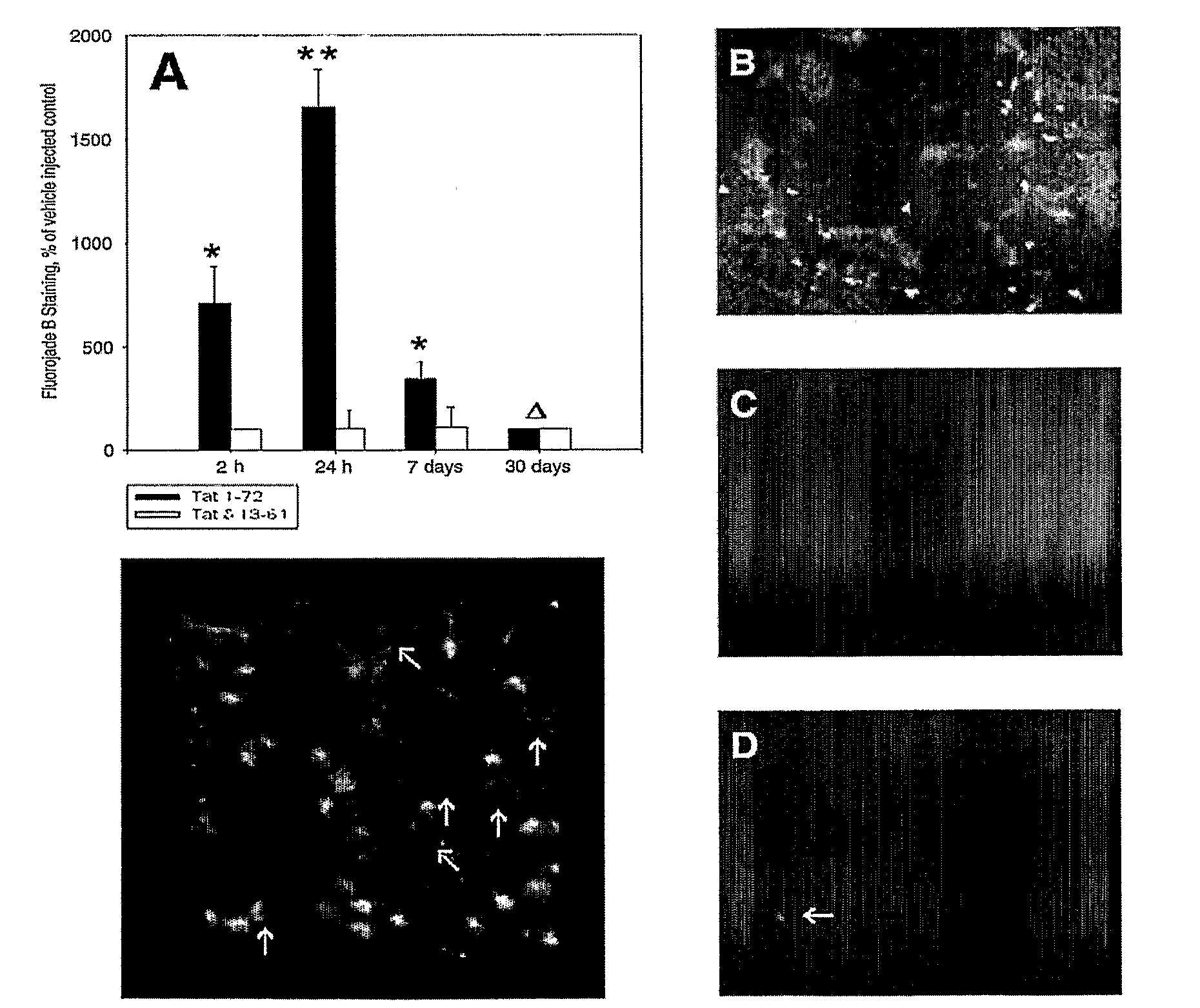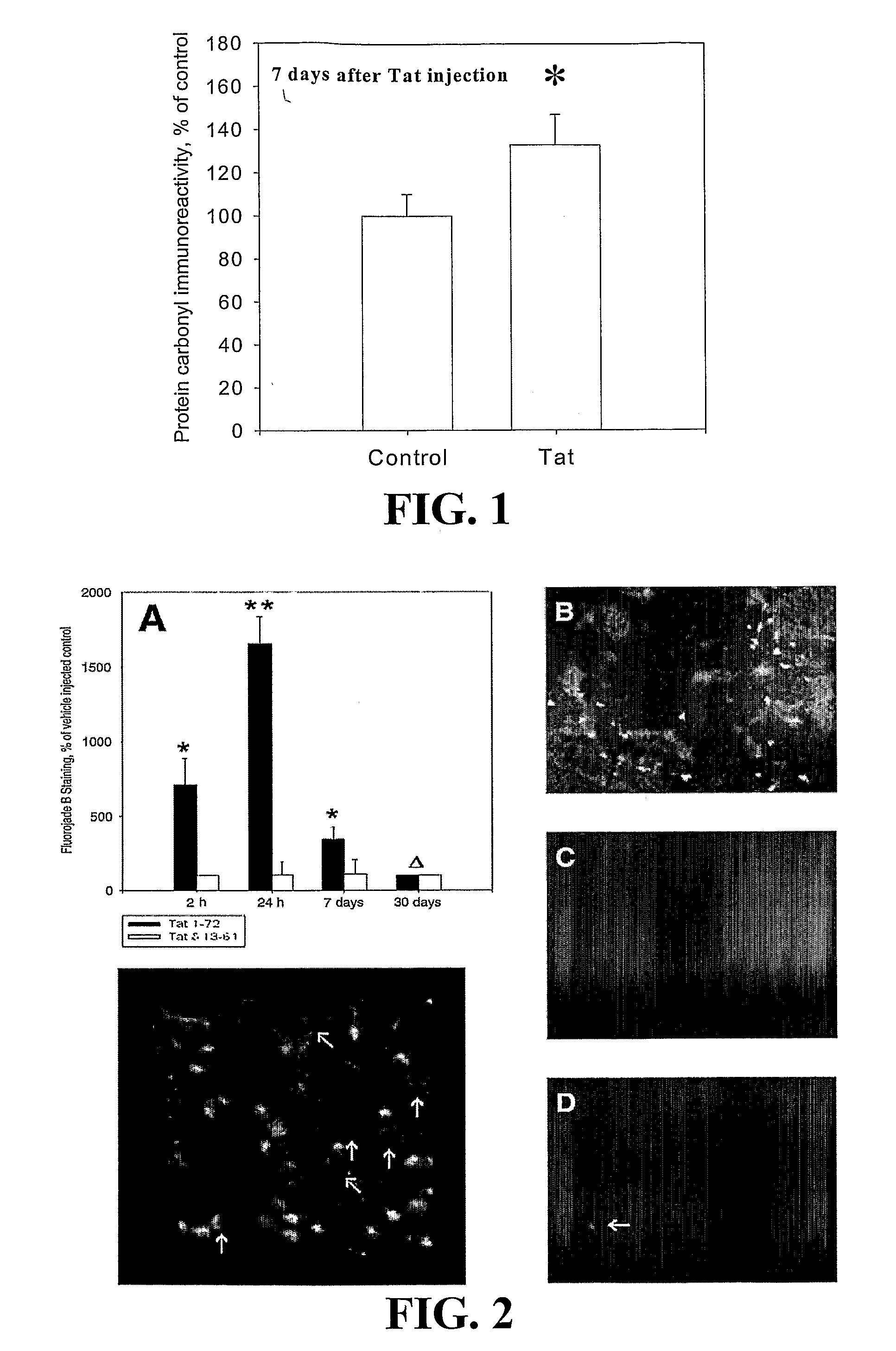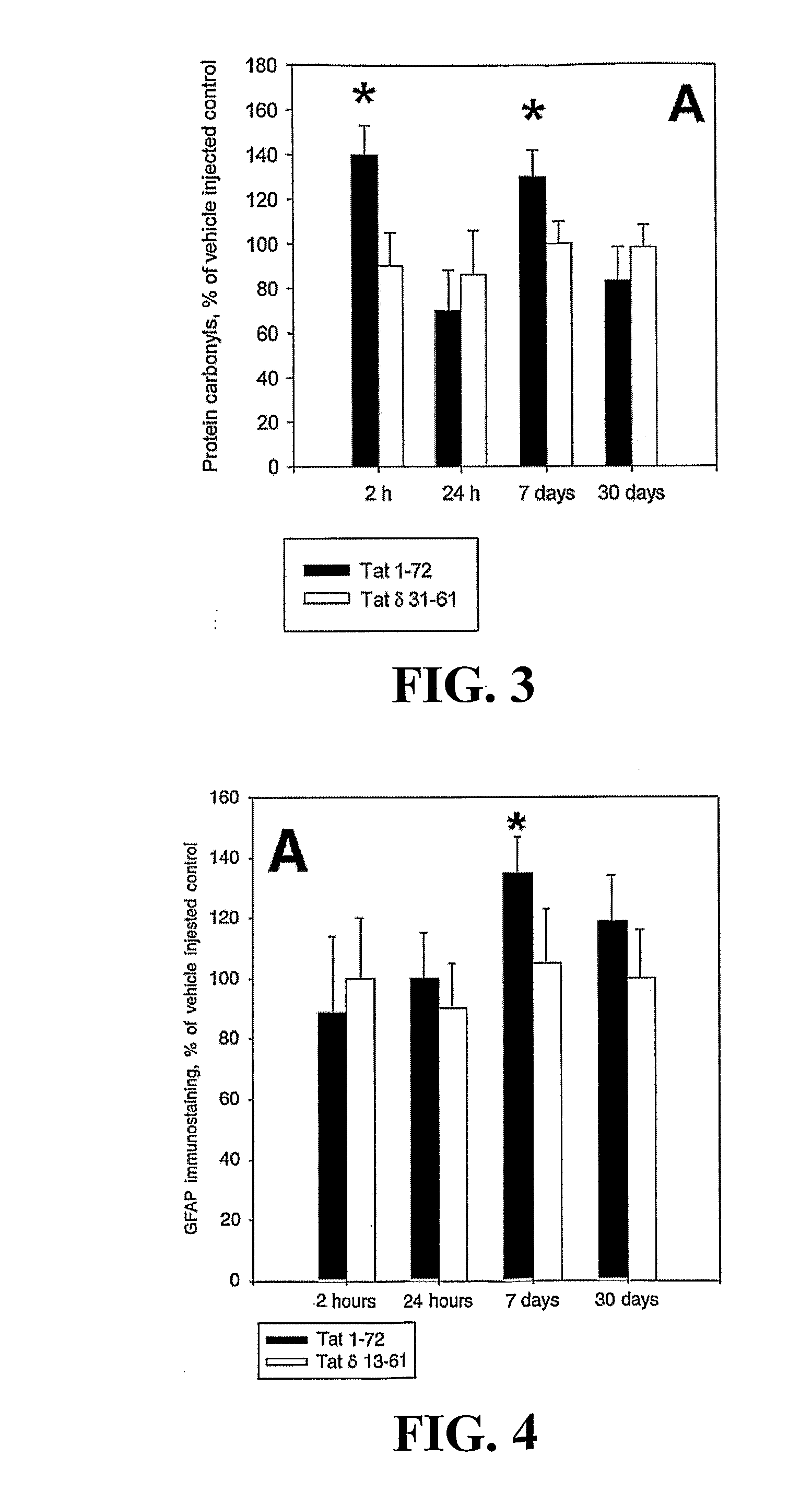Dopamine Receptor Agonists in the Treatment and Prevention of Hiv-Induced Dementia
a technology of dopamine receptor and agonist, which is applied in the direction of biocide, heterocyclic compound active ingredients, drug compositions, etc., can solve the problems of insufficient prevention or treatment of hiv-induced dementia
- Summary
- Abstract
- Description
- Claims
- Application Information
AI Technical Summary
Problems solved by technology
Method used
Image
Examples
example 1
Oxidative Stress Associated with Tat Neurotoxicity
[0116]Neurotoxic properties of Tat have been demonstrated in cell culture studies (Nath, 1999; Nath et al., 2002), but little information was initially available regarding the effects of Tat in vivo. Lesion formation following stereotaxic microinjections of Tat into the rat striatum has been investigated (Bansal et al., 2000). Microinjection of Tat (1-50 μg) found dose-dependent Tat-mediated damage in the rat striatum. This study provided an in vivo model for characterization of molecular mechanisms of Tat neurotoxicity.
[0117]As demonstrated herein, neurotoxicity of Tat 1-72 (first exon) microinjected into the striatum of adult male rats was associated with increased oxidative modification of proteins. Immunoblotting analysis revealed a significant increase in protein carbonyl levels in striatal tissue extracts obtained from rats 7 days after stereotaxic microinjections of Tat (FIG. 1). The dose of Tat injected into the rat striatum ...
example 2
Synergistic Effects of Cocaine on Tat Toxicity: Evidence for Enhancement of Tat-Induced Oxidative Stress in Rat Hippocampal Neurons by Cocaine
[0125]The ability of cocaine to modulate Tat-induced intracellular ROS production and neurodegeneration in cultured rat hippocampal fetal neurons was examined. The dose of cocaine that we used in culture (1.6 μM) was within the physiological levels experienced by human cocaine drug users (Evans et al., 1996). No toxicity of 0.1-10 μM cocaine was observed in cultured rat hippocampal neurons (FIG. 9). After 48 hours of treatment differences in DCF fluorescence between Tat+cocaine and Tat-treated cultures were not significant (FIG. 9); however, neuronal cell death was significantly higher in cultures subjected to both Tat and cocaine (FIG. 9). Increased production of ROS in cell cultures following incubation with Tat and Tat+cocaine is associated with increased protein carbonyl immunoreactivity. Levels of protein oxidation in cell cultures that w...
example 3
Role of Dopamine and Estrogen in Cocaine-Tat Neurotoxicity
[0126]Monoamine transporter proteins (DAT, NET and SERT) are primary sites for cocaine actions with respect to reward / drug abuse (Kalivas, 1995). To determine if DAT is a target for cocaine-Tat interactions in producing HIV-dementia, a 50 nM dose of Tat was used to induce moderate toxicity (15-20% cell viability decrease after 48 hours of treatment) in rat hippocampal cell cultures. The selective dopamine transport inhibitor, GBR 12909 (Sigma-Aldrich, St. Louis, Mo.) (1-(2-bis(4-fluorphenyl)-methoxy)-ethyl)-4-(3-phenyl-propyl)piperazine) is a selective inhibitor of DA uptake. GBR-12909 exhibits selective affinity to dopamine transporter of about 500 times higher than cocaine. Doses from 0.05 to 6 μM are not neurotoxic to rat hippocampal neurons in culture.
[0127]Thus, the data in FIG. 11 indicates that the dopamine transporter protein (DAT) is a site of cocaine action for producing cell death in conjunction with Tat exposure. ...
PUM
| Property | Measurement | Unit |
|---|---|---|
| Therapeutic | aaaaa | aaaaa |
Abstract
Description
Claims
Application Information
 Login to View More
Login to View More - R&D
- Intellectual Property
- Life Sciences
- Materials
- Tech Scout
- Unparalleled Data Quality
- Higher Quality Content
- 60% Fewer Hallucinations
Browse by: Latest US Patents, China's latest patents, Technical Efficacy Thesaurus, Application Domain, Technology Topic, Popular Technical Reports.
© 2025 PatSnap. All rights reserved.Legal|Privacy policy|Modern Slavery Act Transparency Statement|Sitemap|About US| Contact US: help@patsnap.com



